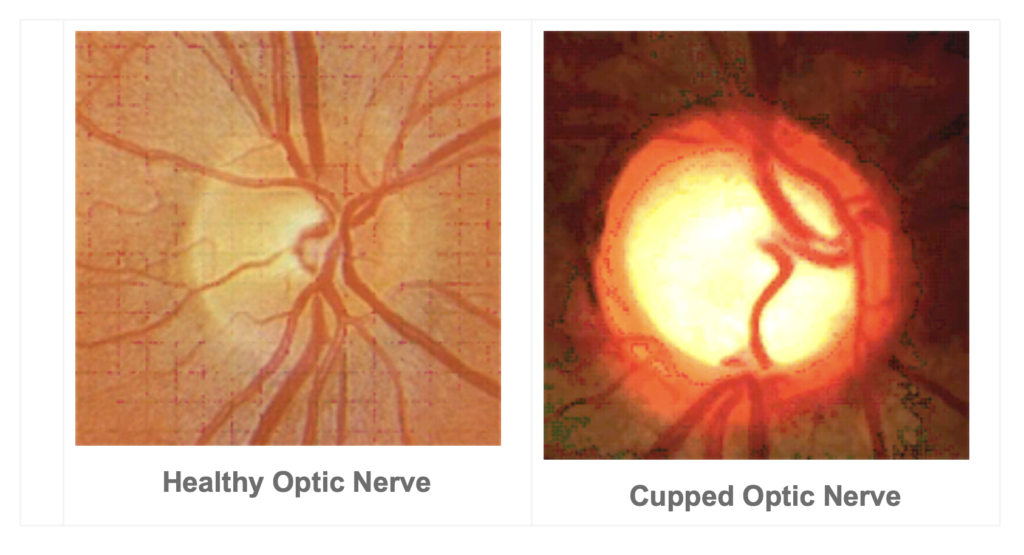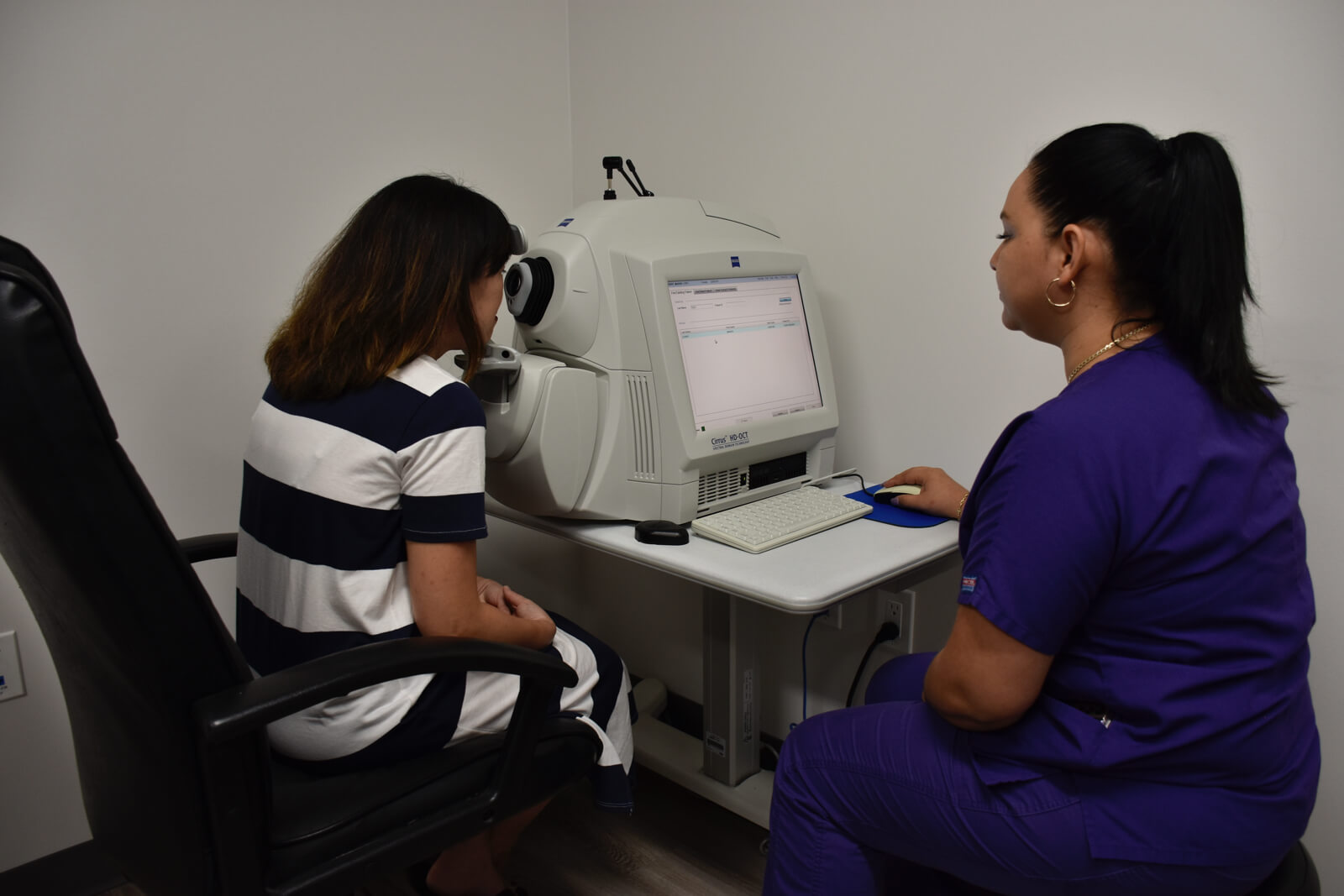What is Glaucoma?
Glaucoma is a leading cause of visual loss that can occur at any age. It causes permanent damage to the main nerve in the eye, the optic nerve. This damage is seen on an eye exam as loss of nerve tissue or optic nerve ‘cupping.’ Over time this causes loss of peripheral vision or tunnel vision. Eventually, it can lead to blindness.

Most glaucoma patients have no symptoms until very late in the disease. It usually causes a slow, gradual loss of peripheral vision. It does not affect central vision until very late in the disease. This means it does not blur vision or cause problems reading until very advanced damage occurs. Many patients do not realize they have had glaucoma for many years. It is important to diagnose and treat glaucoma as early as possible because once the damage has occurred, it cannot be reversed.
It is not known why some people develop glaucoma. However known risk factors include: advancing age, African American race, family history, thin corneas, and elevated eye pressure.
How Does Eye Pressure Affect Glaucoma?
Glaucoma is caused by too much fluid pressure within the eye that gradually damages the optic nerve. The pressure is measured during an eye exam and is not related to blood pressure. Most glaucoma patients have eye pressures over 21. However, a normal eye pressure reading is not necessarily safe, as many glaucoma patients have so-called normal pressure glaucoma. These patients require even lower eye pressures to preserve their vision.
How is Glaucoma Treated?
The only known treatment for glaucoma is to lower eye pressure. Most patients are treated with eye drop medications, every day, for the rest of their lives. Laser surgery can also be helpful, and sometimes surgery in the operating room is needed for the more advanced cases. However, none of these treatments, even surgery, can undo the damage that has already occurred. Glaucoma must be treated and monitored for life.

OCT of optic nerves showing glaucoma damage

Visual field showing loss of vision.
How is Glaucoma Monitored?
Since the damage from glaucoma is permanent, it is important to diagnose glaucoma early and to have regular eye exams. Once diagnosed with glaucoma, a patient will be seen every 3-6 months to ensure that the eye pressure is at an appropriate level. It is very important to take any prescribed glaucoma medications consistently. Missing doses will make the pressure rise, and this can cause glaucoma to worsen. In addition, other tests are done regularly to ensure the glaucoma is under control. A visual field test measures peripheral vision loss and is typically done at least once a year. Advanced cameras such as OCT and fundus cameras measure the shape of the optic nerve in fine detail. They can detect subtle changes that can indicate glaucoma damage.
Glaucoma is a serious disease that requires a lifetime of care. However current treatments are very effective in preserving good vision. Early diagnosis, regular follow-up, and consistent use of any prescribed medications are the keys to keeping glaucoma under good control.

